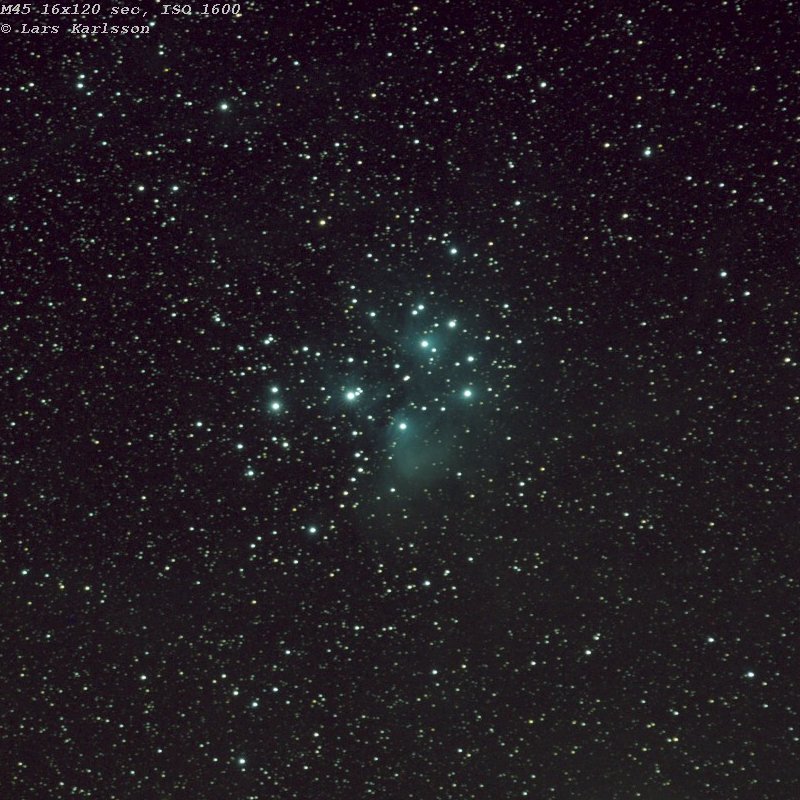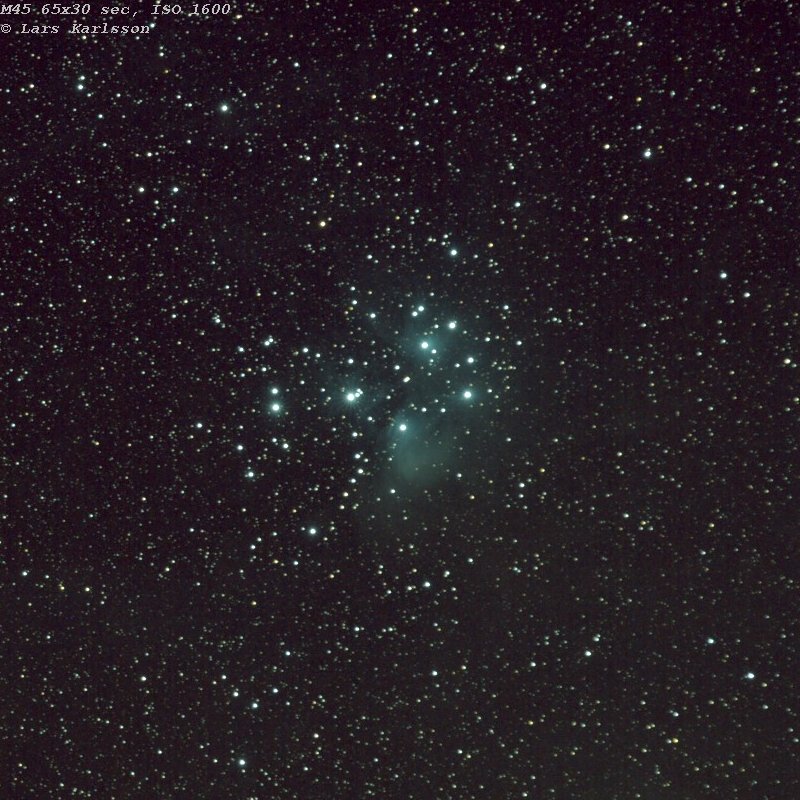|
Advertisement / Annons: |
Tutorial:
|
Content:
Note: |
2, Dynamic weak part of a object:Here I have done two test photos. One with 16 x 120 seconds exposures, and another with 65 x 30 seconds exposures. Both have a total exposure time of 2 minutes. My camera is a Canon EOS 6D and that camera has a low read out noise. Readout noise depends on which ISO setting I chose (not all cameras has this behavior). Higher ISO lower the noise because Canon has built in a pre amplifier that raise the signal above the ADC readout noise. But higher ISO limit the dynamic range. It has to be a compromise, If I have the camera set to ISO 1600. At ISO 1600 it has a gain of 3 (3 ADU step for each electron it detect). The 14 bit ADC has a upper limit of 16000 ADU, subtract the bias and 140000 is left. Divide by 3 (the gain) and you have the max limit of about 4700 electrons. The sensor can store about 60000 electrons so it's a shame that you can't readout all of the sensor's signal. But still it works very good. When reducing the exposure time from 120 seconds to 30 seconds you can detect 4 times higher signal levels without oversaturate it. At the same time you increase the number of images by 4 times. But will it affect your ability to detect weak signals? It depends very much how dark your site is and how good the camera is, especially important is that it has a low readout noise. With my setting above the readout noise is 3 electrons. One reason I do this test is that I couldn't polar align my Star Adventurer good enough. With 120 seconds exposure you can see that the stars drift because of bad polar align. With shorter exposure time it will not be that big problem. The first photo is a stack of 16 x 120 seconds photos: 
The second photo is a stack of 65 x 30 seconds photos: 
The difference in color are most because of me, couldn't set it up exactly the same. Can you see any difference in the nebulosity? I have a gamma of 5 and the white point is set to a low value to limit the range around the nebula's levels (dynamic range).
|
|